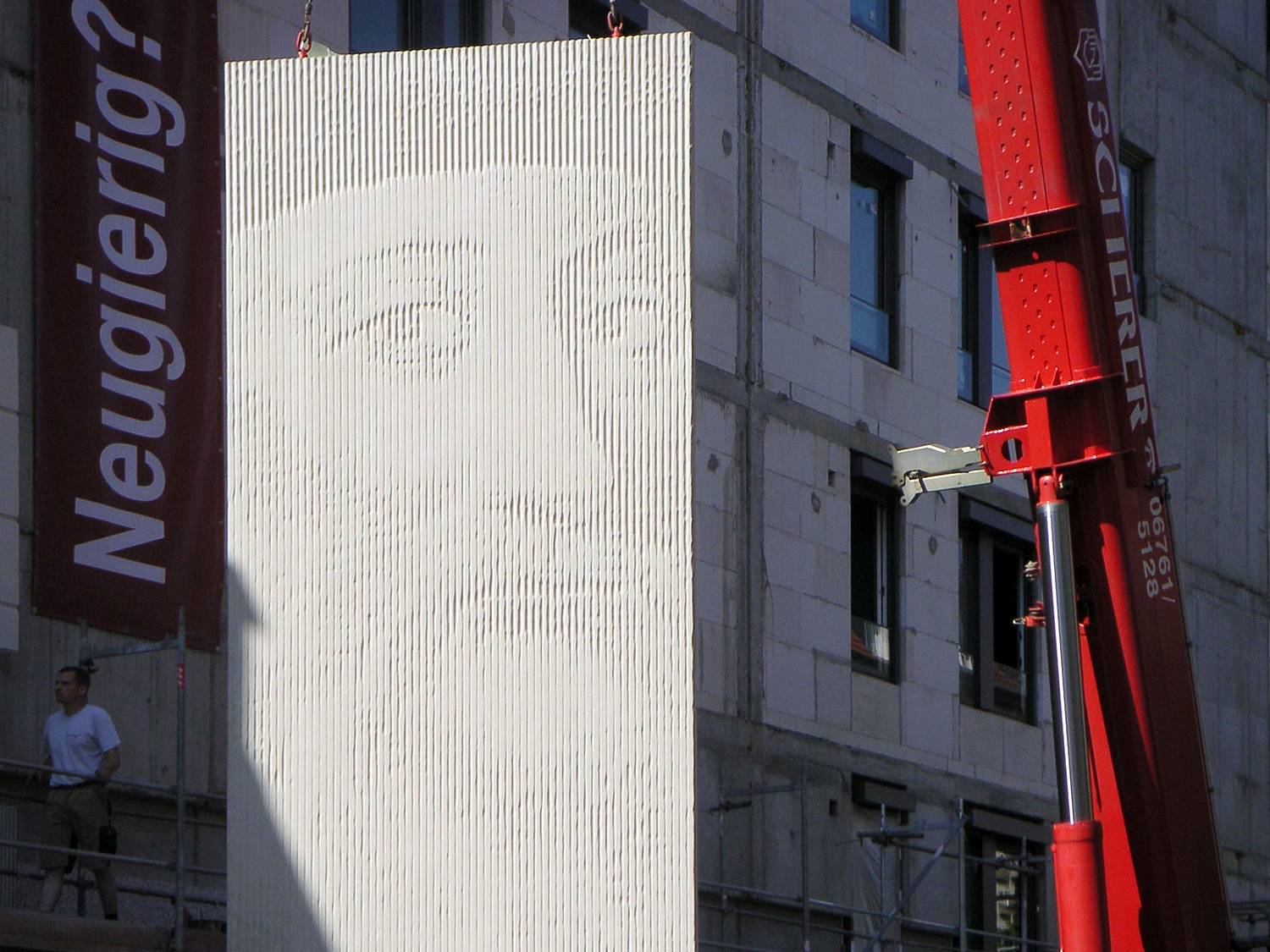Gutenberg Höfe, Heidelberg, Germany
The former site of the Heidelberger Druckmaschinen printing press has been turned into housing. The architects have created a monument to the inventor of the printing press, Johannes Gutenberg, both in the name of the area - and in the form of a special portrait.
Almost 13,300 square meters in size, the site is where Heidelberger Druckmaschinen AG first built precision printing presses and managed their international business. 300 old and new Heidelbergers now live on the largest part of the site, measuring 8,400 square meters.
Project management company Hochtief bought the plot in 2005 and joined the city of Heidelberg to implement a change of use, transforming the industrial site into a residential area. Heidelberg architecture firm ap88 won the tender for the plan. The design was for a residential complex with 13 houses and around 170 apartments. The architects opted for a peripheral development to create a closed courtyard. Four additional freestanding buildings create several small courtyards within this.
When drafting their plan, the architects looked back at the site’s previous owner and the printing industry. This led them to the idea of immortalizing the inventor of the printing press, Johannes Gutenberg, on the building. This serves as a historical reference as well as a way for the residents to identify with their new neighborhood. Each of the 13 houses is named after a well-known font, such as Helvetica, Nimbus and Avenir. There is a direct optical reference on two façades of this residential area: Gutenberg’s portrait decorates the façade as a 6.72 x 5.06 m relief.
The architects’ original design intended the portrait to be on its own giant panel. This idea was abandoned due to transport logistics; instead, the relief is split up onto three or four exposed concrete panels depending on the side of the façade.
Gutenberg’s portrait was realized using photo engraving. First, a scan of the image was used to create a computer file with 256 different shades of gray. Each shade was allocated a defined milling depth and width that the CNC machine would bore into a panel material. The model served as a template for the completion of an elastic formliner. In order to harmoniously combine the portrait and the façade, the façade panels at the ground floor were given the same V-groove texture that makes up the basis of the photo engraving.
The exposed concrete elements were produced by Zuber Betonwerke in Crailsheim. The company boasts over 50 years of experience and specializes in producing high-quality exposed concrete elements. Structural engineers IfT took over all structural calculations. In close collaboration with all involved, an aesthetically appealing façade was developed. And the clear highlight is Gutenberg’s portrait.
